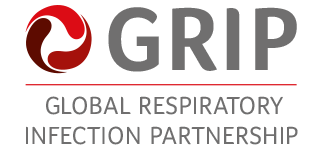Patient Perspective
Patient Perspective
Patients' Antibiotic Beliefs
Patients have a limited understanding of antibiotics, as shown from data from Australia and the UK. Mr Bell summarised a recent survey by the Australian National Prescribing Service that found one in five patients expect antibiotics for a cough/cold, rising to four in five for ear, nose, throat, chest infection7. Only 50% of patients know about antibiotic resistance, with 40% aware that antibiotics are not effective against viruses7.
In the UK, research for the 2011 Antibiotic Awareness Day revealed 53% of 1,767 patients surveyed expected antibiotics and 25% believed they worked for most coughs and colds8, said Dr Duerden.
“Antibiotic resistance is a very important problem, particularly in respiratory tract and urinary tract infections”
Antibiotics in Children
Parental concern for their child’s upper respiratory tract infection can be a driver for antibiotic consultations. Prof. Kozlov agreed that parental demand was a concern in Russia: “While most adults do not request antibiotics from doctors, they are more likely to ask for their children”.
The realities of modern living may also play a role, suggested Prof. van der Velden, with working mothers needing to have their children make a quick recovery so they can return to work.
Prof. Pignatari raised another potential explanation why antibiotics are often prescribed for paediatric sore throat: “In adults, sore throat is easy to diagnose, but not in children. Doctors are often not confident in diagnosing children”.
Giving parents information on managing sore throats and upper respiratory tract infections is an approach that has been utilised successfully in a number of countries, such as Russia, the UK and Thailand.
Patients' Sore Throat Beliefs
 Market research conducted among 32,859
people across 12 countries shows that the
reported incidence of sore throat in some
countries is lower than in
others11, said Reckitt
Benckiser’s Adrian Shephard. Around 70% of
people in Australia, UK, France, Germany
and the US had experienced sore throat
symptoms in the previous 12 months,
compared to 40–50% in Russia, India,
China, South Korea, South Africa, Brazil
and Mexico11. “In some
countries, such as Russia, Mexico and
India, sore throat is also perceived to be
more painful, ” he added.11
Market research conducted among 32,859
people across 12 countries shows that the
reported incidence of sore throat in some
countries is lower than in
others11, said Reckitt
Benckiser’s Adrian Shephard. Around 70% of
people in Australia, UK, France, Germany
and the US had experienced sore throat
symptoms in the previous 12 months,
compared to 40–50% in Russia, India,
China, South Korea, South Africa, Brazil
and Mexico11. “In some
countries, such as Russia, Mexico and
India, sore throat is also perceived to be
more painful, ” he added.11
While around half of sufferers claiming to know the cause of their sore throat, this also differed by country. In 60% of markets, the weather or temperature was attributed as the leading casual factor in the sore throat, with infection the primary reason in only the UK and Australia, although participants from Germany, Russia and South Korea also believed infection was a prominent factor11. Stress, tiredness, environmental pollution and allergy played an important role in some markets11. Despite these variations, the trigger for treatment is consistent across most markets: the majority want symptom relief and to ensure symptoms would not worsen11.
The market research also revealed some important communication cues for healthcare professionals. Sufferers identify with a number of different descriptions of sensations, such as scratchy, tickly, itchy throat and dry throat (see Figure 1)11.
Data presented at the 2012 American Pain Society meeting found that the most important symptoms patients experience vary when they have a sore throat, such as sore throat pain intensity, difficulty swallowing and swollen throat, and patients class any one of these as their chief complaint12. “From a patient perspective, it’s not just sore throat; there are different articulations of sore throat and, as a result, their management expectations may be different”, said Mr Shephard.
In terms of treatment, while around 70% of patients used over the-counter remedies, prescription medicines and antibiotics rated 39% and 19%, respectively11. This was often dependent on symptoms: antibiotics were more likely to be used for severe symptoms. In markets such as India, South Korea, South Africa and Brazil, antibiotics were a more popular choice11. Efficacy is by far the most important attribute of treatment11.
